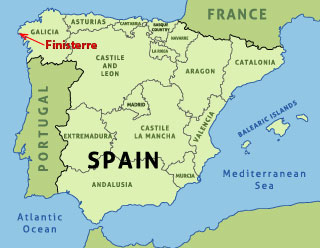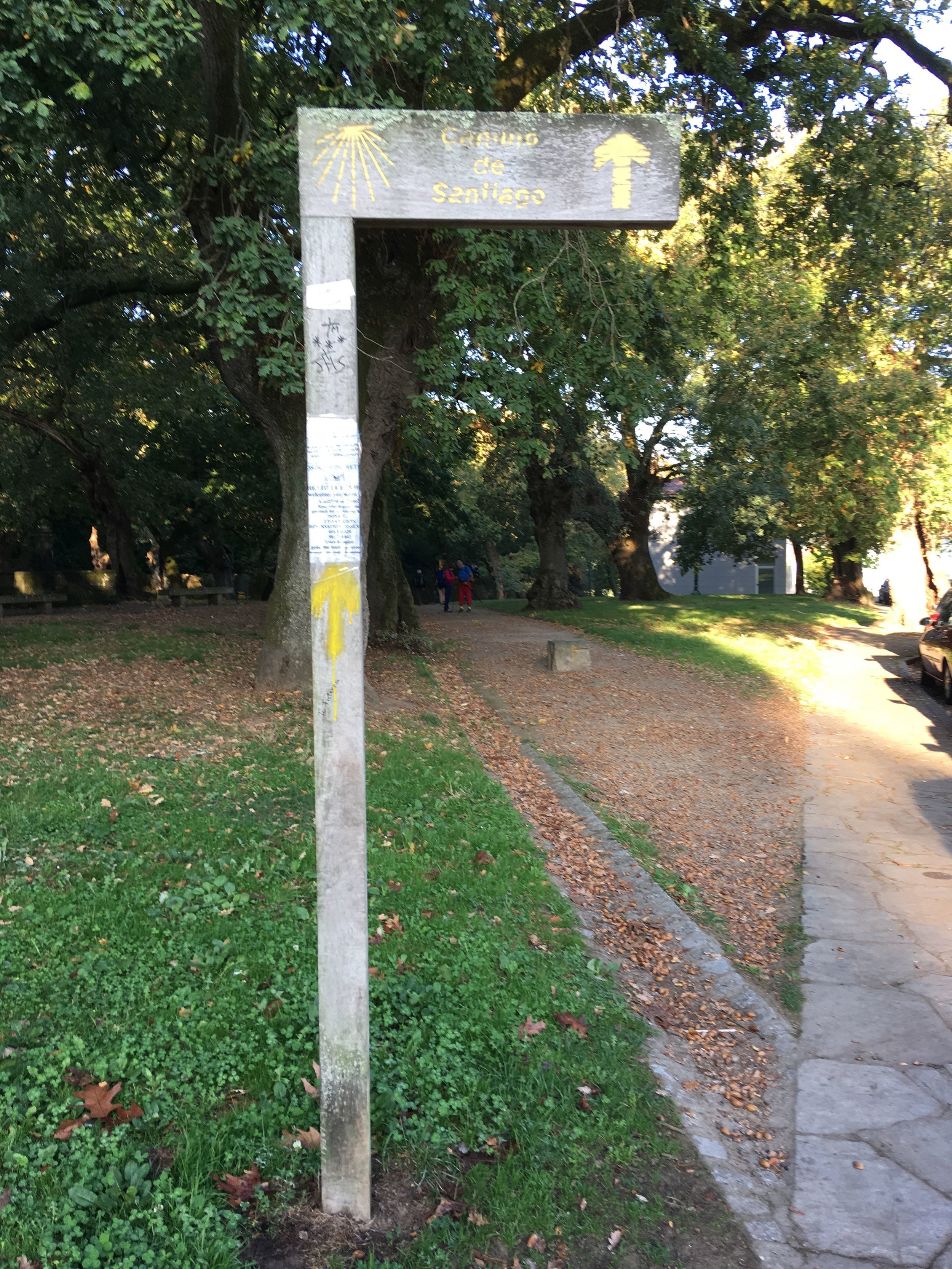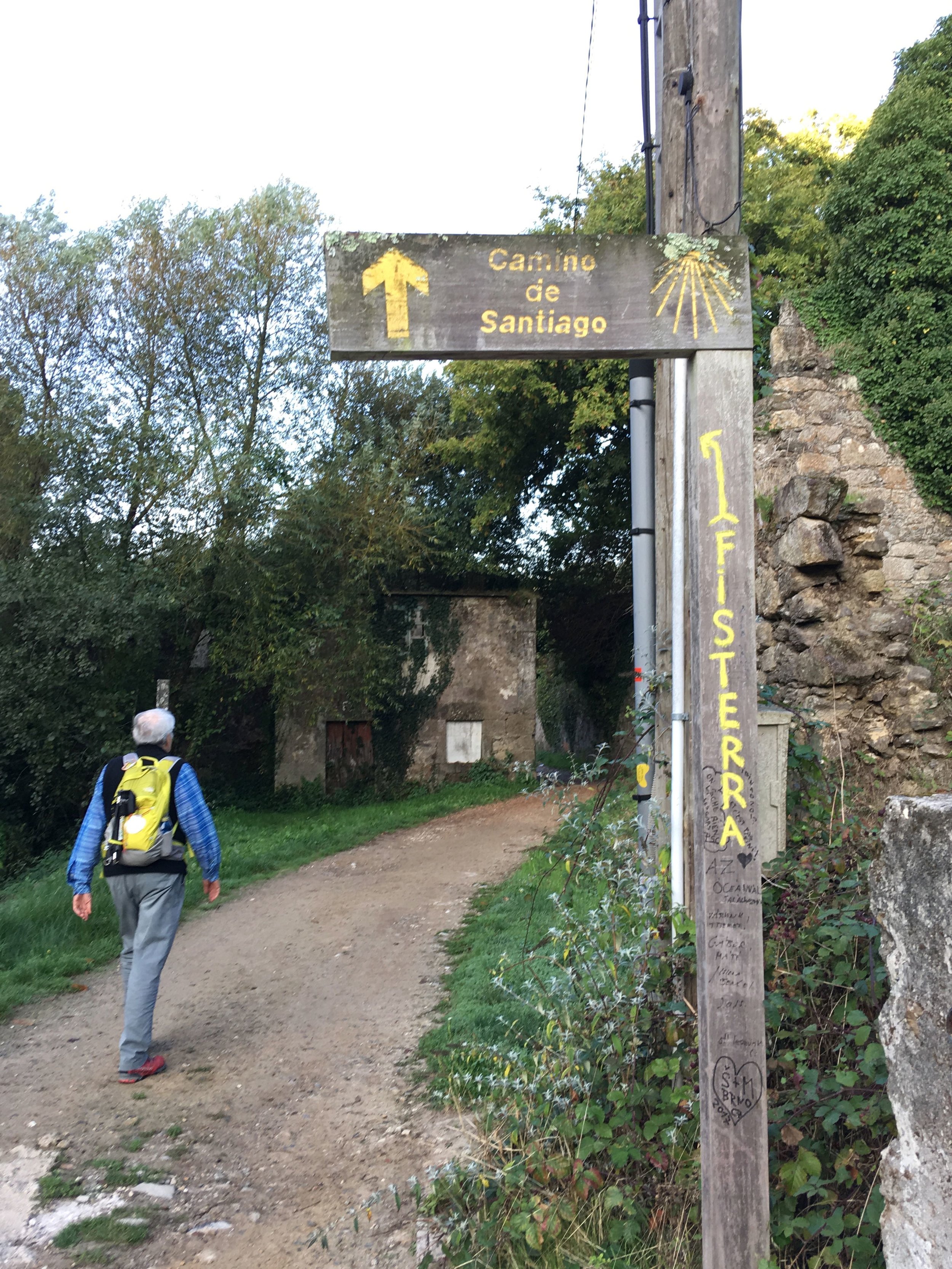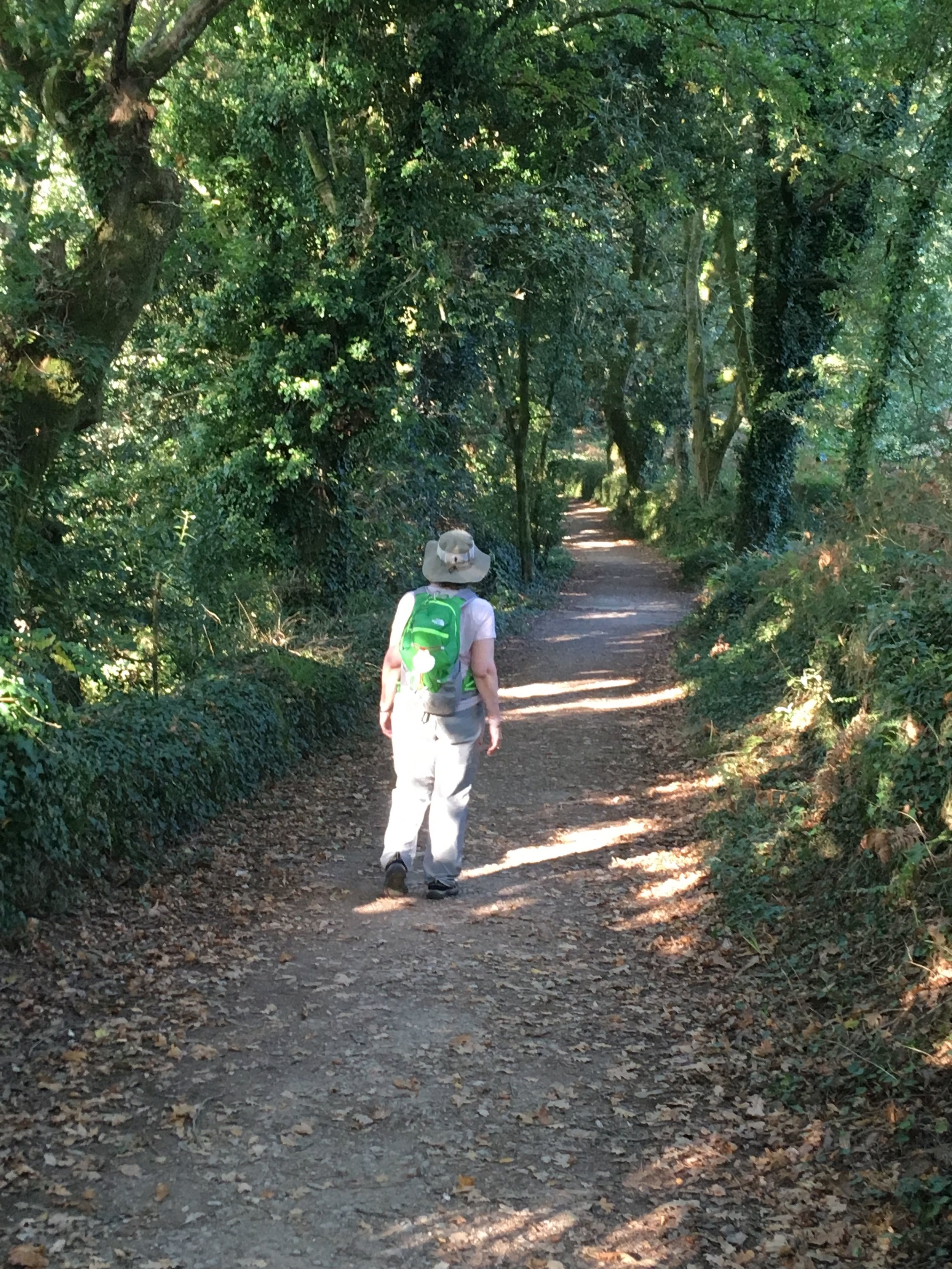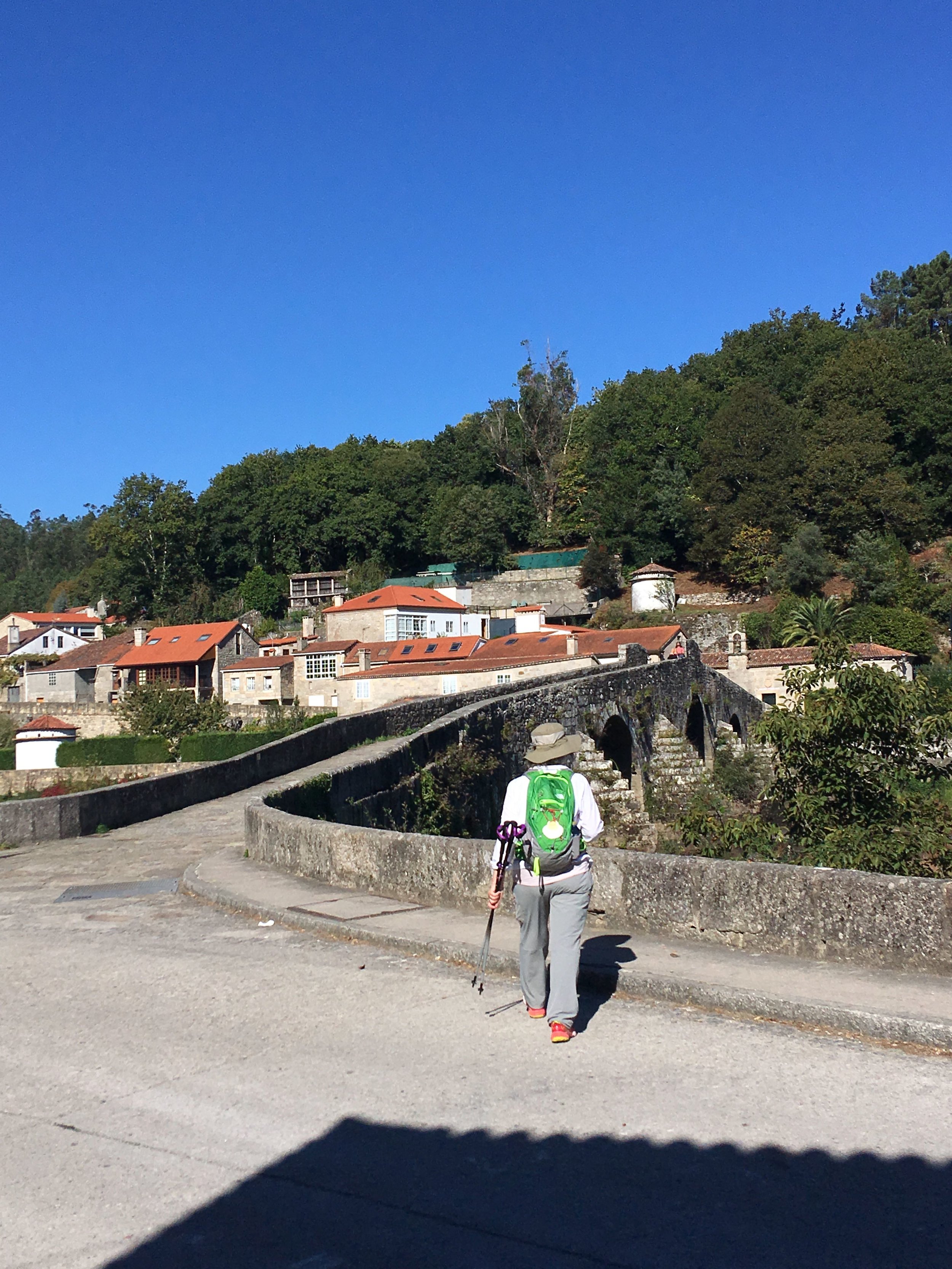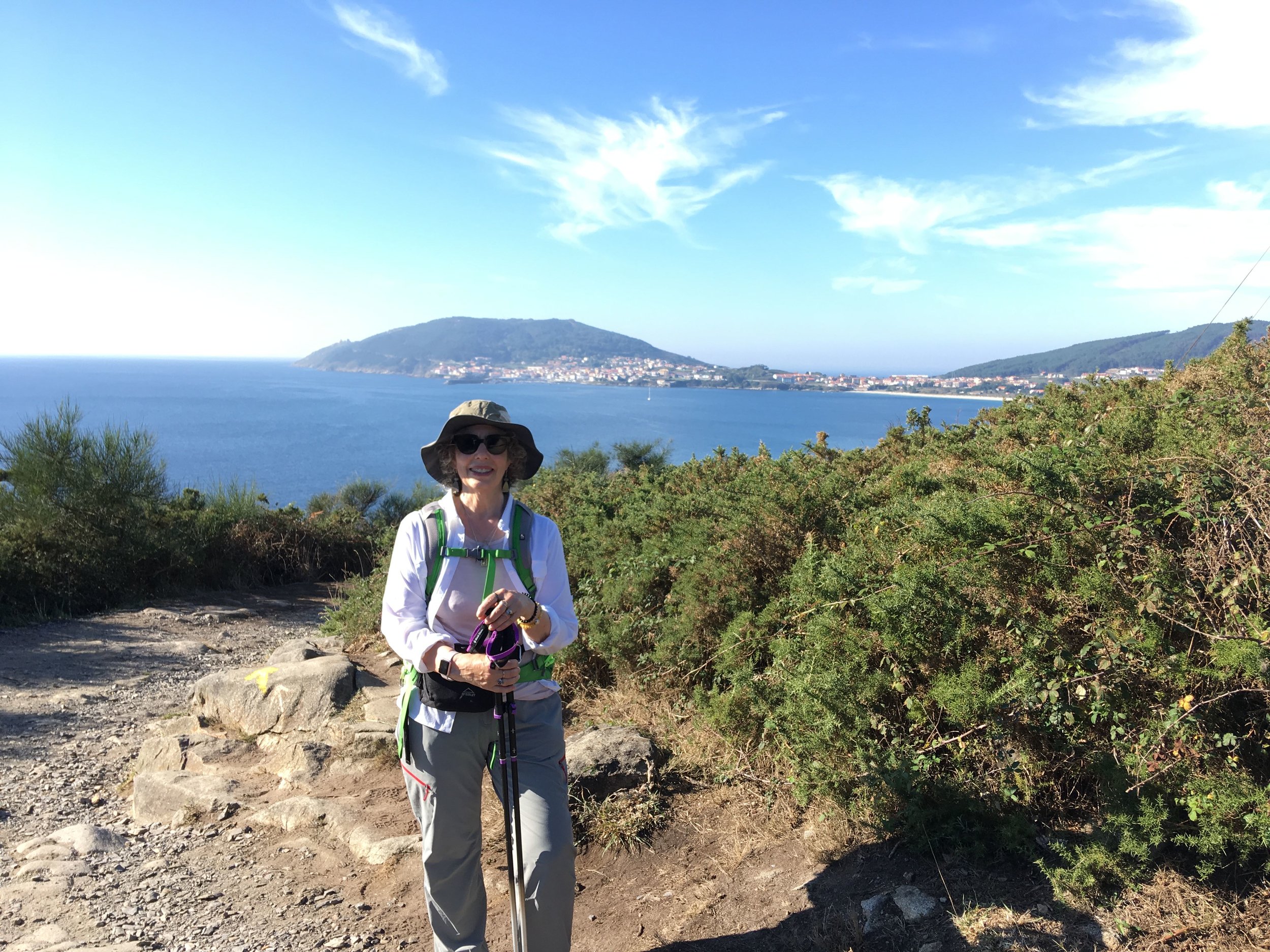To the End of the Earth (October 4-13, 2017)

My birthday gift for Elyn’s 71st was to agree to walk with her from Santiago de Compostela to Finisterre (Cabo da Fisterra in Spanish) on the Camino Fisterra. This rocky peninsula on the north west coast of Spain was thought to be the end of the world in Roman times. In actuality, it is not even the westernmost point of Europe and, as Europeans “discovered” in 1492, there isn’t an “end” to this spherical planet.
To say that we walked the 90 kms (55 miles) from Santiago to Finisterre is correct but a bit misleading. We have learned in recent years to do pilgrimage in a manner appropriate to our advancing ages. We walked a stretch of the road, called a taxi, and returned to the comfort of our hotel. The next day we took a taxi back to where we left off and continued until we tired. We called a taxi and returned to our previous night’s hotel. In this way, we enjoyed the comfort of the same hotel bed for several days and carried only day packs. When the distance from Santiago became too great, we simply moved to another hotel closer to our destination. “Real” pilgrims might scoff at our non-traditional approach to pilgrimage, but it worked for us.
So I can say that I have walked every step of the way from Santiago to Finisterre, but we made what would normally be a three-day walk into a ten-day boondoggle (including two sick days) that was a bonanza for local hotels and taxi drivers.
The tense political powder keg in our home in Catalonia was never far from our minds. I dedicated my efforts in walking to Finisterre to prayers for the resolution of the impasse. We met a number of Spaniards who were fellow pilgrims, and we talked with them as we walked. When they learned that we lived in Girona, they would shake their heads (and sometimes their fists) and angrily exclaim, “Ah, those Catalans!” Never once were we asked our impressions of the Catalan people. Spaniards have learned from their media that Catalan politicians are criminals and they don’t want to learn anything to the contrary. They certainly don’t reject the financial boon that Catalonia gives to Spain, but all the Catalan leaders should just be imprisoned or deported. Not to mention the Catalans!
While we were on our pilgrimage, the Spanish government deposed all the elected officials of the Catalan parliament and imprisoned “independentista” politicians who didn’t flee to other countries. Their offenses were believing that Catalonia should separate from Spain and acting on it in parliament. In the 1970s, Spain codified the late dictator Franco’s dream of a Spain “unified forever” into their constitution. This now appears to mean that holding a contrary view is a crime (sedition) punishable by up to 30 years in prison, even if your actions are non-violent.
Sadly, we decided that we needed to move out of Catalonia. The repression by the central government would be going on for a long time, and I believed that the situation would get much worse. Although we knew we would probably not be in physical danger, being in the center of a repressive regime—and the subsequent responses by those with different ideas—wouldn’t be a good thing. We wondered where our next home would be.
I wonder as I write this blog post if Spain will seek to imprison me. Or will they send me (and my US dollars) packing when my residency is up for renewal? Somehow I doubt this. I am not a citizen and have not been elected to serve in Catalan government. I am not making up rap songs against the Spanish government, and I haven’t had my picture taken in clown costume next to a Guardia Civil trooper, both of which are now punishable offences.
These thoughts occupied our minds as we began our pilgrimage on the Camino Fisterre. Elyn wondered whether this was really an authentic pilgrimage road or a modern invention. But that’s another story. Stay tuned.
